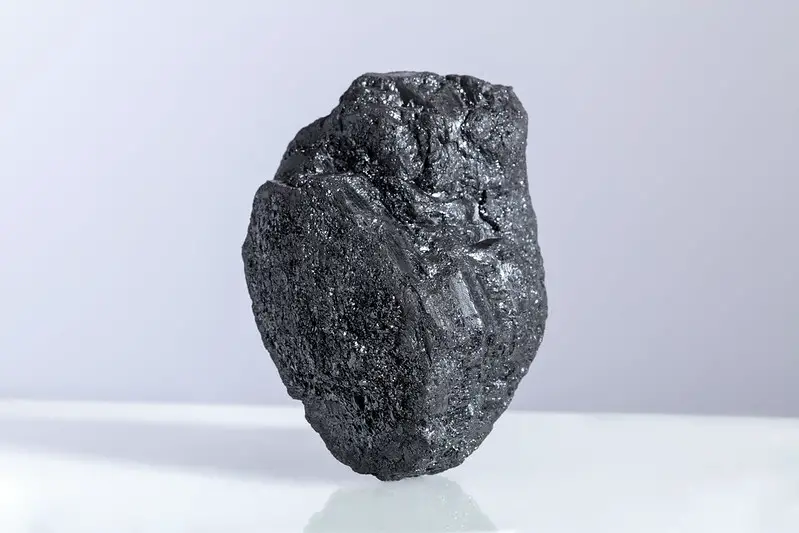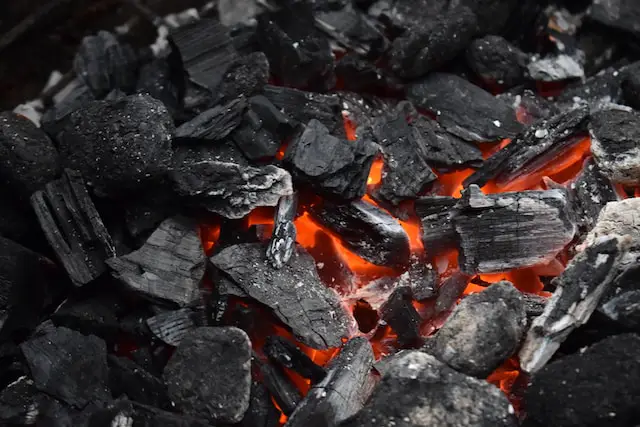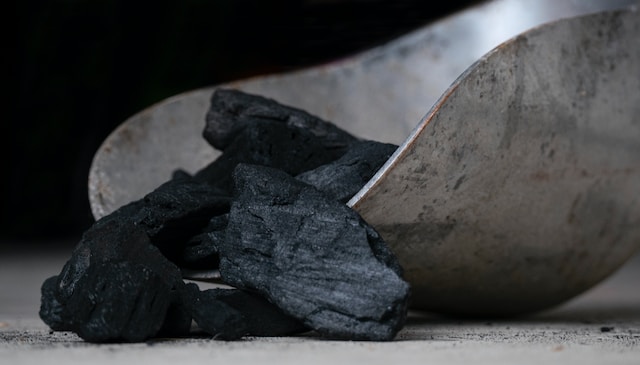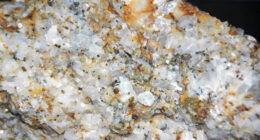Metallurgical coal is primarily used for producing coke, which is essential in the production of iron and steel, while thermal coal is mainly used to generate electricity. The key differences between these two coals lie in their chemical composition, energy content, and physical properties.
Metallurgical coal
(Photo by Anglo American Plc on Flickr)

Metallurgical coal is a type of coal that is used in the production of steel. It has different chemical and physical properties compared to other types of coal. Metallurgical coal, also known as coking coal, is characterized by its low ash content and high carbon content.
One of the most significant differences between metallurgical coal and thermal coal is their use. While thermal coal is primarily used for energy generation, metallurgical coal’s primary application lies in steelmaking. The high-carbon content in metallurgical coal helps produce coke during the heating process required for iron ore smelting.
Another property that sets metallurgical apart from thermal coals is its volatile matter content. Volatile matter refers to substances that vaporize when heated – this includes gases such as methane and sulfur compounds. Low-volatile matter levels are essential for producing strong coke with consistent quality.
Metallurgical coals can be further divided into two subcategories: hard coking coals and semi-soft coking coals based on their properties. Hard coking coals have higher carbon contents than semi-soft ones but are less abundant globally.
Metallurgical or coking-coal plays an important role in the steel-making industry due to its unique properties which make it ideal for making coke needed during iron ore smelting process
Thermal coal
(Photo by Nikolay Kovalenko on Unsplash )

Thermal coal, also known as steam coal, is primarily used for power generation. Unlike metallurgical coal that is used in the production of steel, thermal coal has lower carbon content and higher moisture levels. It is abundant and widely available in many countries around the world.
The properties of thermal coal make it an ideal fuel source for energy production. It burns easily and efficiently, producing high amounts of heat that can be harnessed to produce electricity. The high calorific value makes it a cost-effective choice for many power plants.
Thermal coal comes in different grades depending on its quality and sulfur content. Low-sulfur thermal coals are preferred because they have less environmental impact when burned. Some countries even regulate the amount of sulfur allowed in thermal coals to protect air quality.
Despite being an affordable energy source, there are concerns about the environmental impact of burning thermal coal. Carbon dioxide emissions from burning fossil fuels contribute significantly to global warming and climate change.
To address these concerns, some countries are shifting towards renewable sources like wind or solar power to generate electricity instead of relying solely on thermal coal-fired power plants. This transition will not happen overnight but represents a necessary step towards sustainable development worldwide.
Metallurgical coal vs. Thermal coal – Key differences
Metallurgical coal and thermal coal are two distinct types of coal, each possessing unique properties that set them apart. While both are essential for various industries, their differences lie in the way they are used and processed.
Metallurgical coal, also known as coking coal, is primarily utilized in steel production. Its high carbon content and low impurities make it an ideal choice for producing coke – a key component in the manufacturing of steel. The process involves heating the metallurgical coal to extremely high temperatures without contact with air, resulting in strong coke material suitable for use in blast furnaces.
On the other hand, thermal coal serves as a fuel source predominantly employed by power plants to generate electricity. Unlike metallurgical coal, its primary focus lies not on its carbon content but rather on its energy output when burned. Thermal plants rely upon this type of coal due to its combustion properties that yield substantial amounts of heat energy.
While both types of coals share similarities such as being extracted from beneath Earth’s surface through mining operations – their applications differ significantly based on their individual characteristics.
The properties of metallurgical coal
Metallurgical coal, also known as coking coal or coke coal, is a high-quality type of coal that possesses unique properties. This specific type of coal is predominantly used in the steel-making industry due to its ability to produce high temperatures and low smoke emissions.
One of the essential properties of metallurgical coal is its carbon content. It has a higher carbon content than thermal coal, which makes it ideal for heating up iron ore and creating molten iron for steel production.
Metallurgical coal also has a lower sulfur content compared to other types of coals. The presence of sulfur can have adverse effects on the quality of steel produced by causing defects in the metal structure.
Another crucial property that sets metallurgical coal apart from others is its ash content. This type of coal produces less ash when burned than thermal coals, making it an indispensable fuel source for blast furnaces because it minimizes slag formation during steel production.
Additionally, metallurgical coals are typically harder and denser than other types with excellent mechanical strength properties such as low plasticity index values allowing them to be transported over long distances without breaking apart easily.
These unique properties make metallurgical coals highly sought after by the steelmaking industry worldwide due to their ability to help create high-quality products while reducing environmental impacts through cleaner burning practices.
The properties of thermal coal
Thermal coal, also known as steam coal or thermal-grade coal, is primarily used for electricity generation. It contains high levels of carbon and lower levels of sulfur compared to other types of coal.
One key property of thermal coal is its energy content, which ranges from 25 million to 30 million British Thermal Units (BTUs) per ton. This high-energy output makes it an excellent fuel source for power plants that require large amounts of heat.
Another property of thermal coal is its ash content. When the coal burns, it produces fly ash and bottom ash that contain various minerals such as silica, aluminum oxide, and iron oxide. These byproducts can be utilized in a variety of applications such as construction materials and fertilizers.
Thermal coal also has a low moisture content ranging from 5% to 10%, making it easier to transport over long distances without significant weight loss due to water evaporation.
However, one disadvantage of using thermal coal for electricity production is its potential environmental impact. Burning fossil fuels like thermal coal produces greenhouse gases that contribute to climate change.
As the world shifts towards cleaner energy sources like wind and solar power, the use of thermal coal may decrease in favor of more sustainable alternatives.
The uses of metallurgical coal
Metallurgical coal, also known as coking coal, is an essential raw material in the production of steel. The high carbon content and low impurities make it ideal for transforming iron into steel through a process called smelting.
Aside from being a crucial component in the steel-making process, metallurgical coal has other industrial uses such as producing activated carbon used in water filtration systems and manufacturing silicon metal used in electronics.
Metallurgical coal also plays a vital role in the global economy since many countries rely on its supply to run their steel industries. Countries that have an abundance of this type of coal are considered economically stable since they can export it to countries with less access to it.
Metallurgical coal’s primary use is as a key ingredient in making steel due to its properties that allow for efficient conversion from iron ore. However, its usefulness extends beyond just being an essential part of the steel-making process; it also has various industrial applications and contributes significantly to economies around the world.
The uses of thermal coal
Thermal coal, also known as steam coal, is primarily used for electricity generation. It is burned in power plants to produce thermal energy that powers turbines to generate electricity.
But the uses of thermal coal go beyond just generating electricity. It is also used in industrial processes such as cement manufacturing and paper production. In these industries, it serves as a source of heat energy.
Additionally, some households use thermal coal for heating purposes during winters when natural gas or propane may not be readily available.
However, the use of thermal coal has come under scrutiny due to its significant contribution to greenhouse gas emissions and air pollution. As a result, there are increasing efforts towards transitioning away from using fossil fuels like thermal coal and towards renewable sources of energy.
Despite this push towards sustainability, the demand for thermal coal remains high in developing countries where it continues to serve as an affordable and accessible source of energy for millions without access to modern technologies or cleaner alternatives.
Is bituminous coal the same as thermal coal?
Bituminous coal is a type of coal that falls under the category of thermal coal. This means that it is primarily used to produce electricity through combustion. However, not all thermal coals are bituminous coals.
Bituminous coal gets its name from its high content of bitumen or tar-like hydrocarbons. It is a dense and heavy black coal with a relatively high energy density, making it ideal for use in power generation plants.
On the other hand, there are different types of thermal coals such as sub-bituminous and lignite which have lower energy densities than bituminous coal but still serve similar purposes in power generation.
While both metallurgical and thermal coals can be categorized as bituminous, it’s important to note that they differ greatly in terms of their properties and uses. Metallurgical coals are primarily used in steel production while thermal coals are used for power generation.
While bituminous coal falls under the umbrella term ‘thermal coal’, not all thermal coals are classified as bituminous. Understanding these distinctions between different types of coal can help individuals make informed decisions regarding energy consumption and production methods.
Featured Image By – Joey Harris on Unsplash









